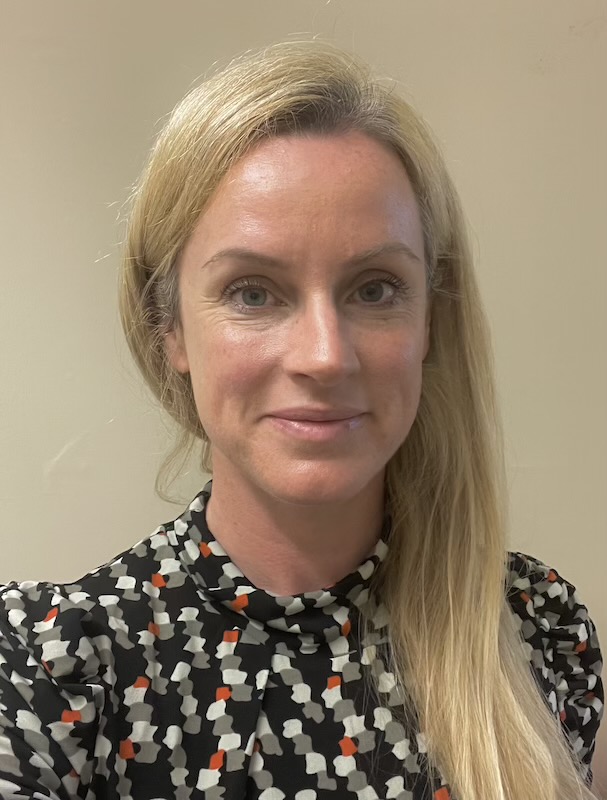The Underrepresentation of the Majority: Women in Veterinary Medicine
Marking the International Day of Women and Girls in Science, Dr. Kelly Blacklock at the Royal (Dick) School of Veterinary Studies shares her anger at the under-representation of women in writing the canon of the field. Working with two GENDER.ED interns, she shares their new research on gendered patterns of representation in vet science.
They say that the flap of a butterfly wing can cause a tornado. My butterfly effect wasn’t as subtle, but rather a furiously sharp elbow in the ribs which awoke me from a daydream. We were sitting in a lecture at the annual scientific meeting of the European College of Veterinary Surgeons 2022 in Porto, mellowed on the warm Portuguese weather and a lunchtime glass of port. A scrap of paper was thrust under my nose: ‘Lectures: Men- 70% Women- 30%’. The author, Kathryn Pratchske, is renowned for her scrupulous attention to detail, a quality that makes her a phenomenal surgeon. However, the numbers were so outlandish that I doubted my friend for a moment.
And so, when we returned to the UK a few days later, we wondered how to start a conversation about gender and veterinary medicine. We had the answer right on our doorstep in GENDER.ED (https://www.gender.ed.ac.uk), a cross-University of Edinburgh hub for gender and sexualities studies. GENDER.ED founding director Fiona Mackay and consultant Rosalind Cavaghan helped us create an 8-week summer project for two undergraduate students, which would allow them to start gathering the data required to paint a picture of women in contemporary European veterinary medicine. With funding eagerly provided by the Vet School, and bolstered by the phenomenal reputation of GENDER.ED, we received a huge amount of interest in the project. Alina and Ishita, two social science students, accepted the roles and have been an absolute inspiration to all the 12 veterinary specialists who have been diligently providing and interpreting data.
What have we learned? Veterinary medicine is a profession where women are well represented - in 2021, a whopping 77% of UK-practicing veterinary surgeons are women1. Despite this, we’re significantly under-represented in journal publications and at conferences. Ishita has been looking at the proportion of women and men authors in 7 veterinary journals over a twenty-year period, 2002-2022. Our main journal, Veterinary Surgery, published work by 6357 authors during this time, 65% of whom are male. If you think that some of this disparity must be historical, you’d be wrong: in 2023, 68% of authors were men, demonstrating the persistence of this gender gap. Alina’s interest on the other hand, lay in identifying any gendered patterns in conference participation and invitations, looking at prestigious roles like keynote lectures and master classes at specialist-level European veterinary conferences. Alina’s data have parallel themes with Ishita’s. For example, in the 2022 European College of Veterinary Ophthalmology annual scientific meeting, only 42% speakers in the Masterclass stream were women.
Why do these figures matter? They show that although the large majority of Veterinary Surgeons are women, ‘the canon’ of vet science publications significantly under-represents women surgeon’s contributions and that conferences consistently under-represent women as intellectual leaders and experts in our field. Yet this is a reality hitherto unacknowledged in our professional field – the production and analysis of these data have not come from our professional body. It has had to come from the initiative of indignant female Veterinary Surgeons. The failure to routinely capture these data, and data about intersecting inequalities such as race and class, is telling – and raises questions as to “what counts” in our discipline.
By the end of 2024, our results will hopefully culminate in 5 peer-reviewed papers and 5 conference presentations. We are all looking forward to seeing Alina and Ishita presenting their data at the podium and to see their name in print, and this wouldn’t have been possible without the support, advice, and encouragement of GENDER.ED.
I’ll be honest, I’m angry. Angry that the results are so stark, and angry that I didn’t appreciate it earlier. As a cisgender, heterosexual, middle-class, white woman, I’m acutely aware I’ve had it relatively easy. But when my 6-year-old daughter declares that ‘scientists don’t wear skirts’ (even though I wear one every day), or when I mull the existence of gender pay gap for median gross hourly earnings in veterinary medicine whereby women are paid 7% less than men2 (indeed, some of the large corporates have a gender pay gap of 37-52% in favour of men3), I’ve had enough. And so, I hope that this will be the beginning of a long relationship between the GENDER.ED, and the School of Veterinary Medicine. Going forward, we want to explore the processes creating these disparities in positions of prestige in veterinary medicine, and to think deeply about how we can tackle inequalities in knowledge creation and leadership.
So I’m optimistic that momentum for discussion around leadership and privilege in Vet Science is building, ultimately leading to a discipline that utilises the full potential of everyone who wants to participate in it. For, to quote Malala Yousafzai, “We cannot all succeed when half of us are held back”.
References
- RCVS Workforce Summit 2021. Recruitment, retention and return in the veterinary profession. https://www.rcvs.org.uk/news-and-views/publications/recruitment-retention-and-return-in-the-veterinary-profession/#:~:text=The%20proportion%20of%20new%20UK,%2C%20to%2011%25%20in%202021 Accessed July 2023.
- https://www.ons.gov.uk/employmentandlabourmarket/peopleinwork/earningsandworkinghours/bulletins/genderpaygapintheuk/2022 Accessed July 2023.
- https://www.bbc.co.uk/news/business-65179430 Accessed July 2023.
Author Bio
Kelly Blacklock is a Senior Lecturer in veterinary surgery at the Royal (Dick) School of Veterinary Studies, and a Research Fellow in the Patton lab at the Institute of Genetics and Cancer.
